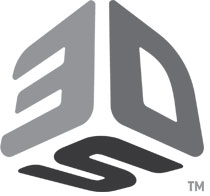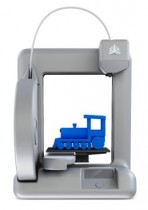The Future of 3D Printing
The realm of 3D technology has been around for a long time, since the 1950s when it was first introduced to film with primitive 3D view glasses. Since then, time has allowed for advancements that have led to the innovations of 3D television and video technologies. These are much more advanced, yet still are based on the same simple principles of optically rendered visual redefined perspective. Today the newest innovation has come in the form of 3D printer technologies.
3D printing has been fully functional for a few years, but not everyone realizes the amazing potentials that it unlocks for the information age. Almost everything that surrounds us in the world today is created through 3D printing and modeling. Most fabricated objects have been designed, engineered, conceived and prototyped using a 3D printer of some kind.
 It was a company called 3D Systems that saw the road ahead for this kind of scientific printing application.
It was a company called 3D Systems that saw the road ahead for this kind of scientific printing application.
3D Systems is now the company at the forefront of 3D printing, as creators of the most viable systems using this form of technology. Their bringing together of 3D modeling and rendering, that combines with the power of physical printing or sculpting is changing the face of fabrication. With 3D printers, objects can be outputted for printing into form using plastics, metals, and from various composite materials, making physical fabrication possible for many different industries.
The CEO and President 3D Systems, Abe Reichental talks live on Bloomberg West about the great potentials of 3D Printing, ” Today most of our customers are in transportation, recreation, consumer health care, and those include all of the automotive companies, major hearing aid and orthodontics, and dental companies, toy companies. We really span the entire range, and our new customers are educators and schools.”
The slow and growing demand for what their company offers is coming of age. Within their growing base of industries and businesses, 3D systems has become the leading provider for content to printer fabrication solutions. Their devices enable many companies, individuals, and developers to achieve the high end production speed processing for production and product design. They also are the major seller of personal printing kits and professional level 3D printing systems worldwide.
When asked about competition with 3D Systems for the 3D Printing market, Abe Reichental has this to say during his Bloomberg West interview, ” There are a lot of good competitors in this business, our business model I think is very compelling and unique. In the sense that we are monetizing technology into multiple print engines. We’re the only company that has six print engines. We have multiple revenue streams that include printers, print materials, print services, and a growing portion of content that we think are really going to accelerate our growth.”
Who are the customers that 3D Systems is seeking to market towards? 3D systems sees two major markets for their systems currently, those are in real manufacturing and in the consumer sector. The goal is to bring this technology into the homes of the world, as the price range now begins to become realistic for consumers.
Some skeptics and theorists see 3D printing, as a potentially problematic and dangerous form of disruptive technology.
This is a term coined by the Harvard Business School professor Clayton M. Christensen. It describes any technological innovation that causes unreasonable displacement of an established technological form, in this case how 3D printing is likely to impact many other industries.
On the theoretical end of things, Enrico Dini has proposed the ability to build cheaper housing for the world using 3D printing. His vision is akin to the Usonian household proposed by Frank Lloyd Wright long ago. Still as profound as his goals with 3D printing are, such ideas have been met with more than a little skepticism and argument about how this might impact society.
It is realistic to speculate that 3D printers will upset several industries in the near future.
Automotive design has already been altered by robotics, now it will see changes in fabrication of parts and engineering materials design. The medical field has already quickly seen a wave of new capabilities, that may replace the need for human crafting of things like pacemakers, mayo electric arms, replacement limbs and possibly other orthopedic items. Surely this technology will have impact on the arts and any industries that model, mold, or use fabrication for their products. Many types of assembly line construction could conceivably be replaced by high tech 3D printing workstations.
This is just a lament assessment of the possibilities in the next 5 to 10 years time, assuming that there are no sudden advancements unknown to the public currently.
Another impact of 3D printing is likely to be in the area of what we define as digital content. Although 3D Systems and some other companies want to market this type technology to the general public, they are not the only powers in the market forces. Having seen how digital audio, CD burners and DVD changed the music and film industries, many companies are probably going to seek to prioritize 3D printing technology. It maybe that 3D printers become highly regulated devices, such that their ownership and usage maybe limited to protect infringement of Intellectual Property rights on general designs.
If every household had a 3D printer, there would be no need to buy parts from your local car dealer, electronic repair shop, or other fabrication specialist. This is a realistic possibility, one that is not likely to sit well with the owners of many copyrights on devices throughout the world. 3D printing could impact many industries in this way, so the future of public access still remains to be seen.
Finally in recent days there has been a stir around the gentleman who printed a firearm on a 3D Printer. Many are shouting from the rooftops that this marks the end of gun control. And to some degree it will have an impact on future legislation that may affect 3D Printers. However 3D Printers are not the only tools which can create firearms. The current tools used for manufacturing firearms are not overly regulated. Anyone can setup shop at home for much cheaper than the cost of a production quality 3D Printer. Despite these truths, the arguments for and against 3D Printing regulations will continue.


